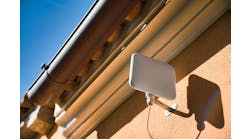Latest from FTTx/Optical Networks
With consumers’ demands for high quality broadband showing no sign of slowing, deployments of fiber are becoming more and more commonplace. However, this is not the case for all countries, with 187 million homes still to be passed for Fiber-to-the-Home (FTTH) by 2025 in Europe alone, according to FTTH Council Europe. In addition, FTTH Council Asia-Pacific expects a further 649 million FTTH subscribers to be connected by 2023 in the APAC region.
The difficulty is that a significant number of the population lives in Multi Dwelling Units (MDUs), which are complex environments to deploy fiber to. Operators establishing a network in challenging locations such as hotels or a block of flats with multiple tenants are tasked with reaching each customer within each unit. And that’s no easy feat.
As a result, it is becoming imperative for network providers across the industry to find a way to efficiently serve MDUs with the high-quality connectivity they seek.
MDUs Challenges
While deploying fiber in Single Dwelling Units (SDUs) is a fairly straightforward process, this is certainly not always the case when deploying in MDUs. The biggest challenge is that a lot of the population live in MDUs, with 41 percent of European residents (as recently as 2017) living in a flat, according to eurostat’s housing statistics.
MDUs come in various forms such as New Builds (Greenfield), Existing Builds (Brownfield), as well as High-Rise and Low-Rise blocks which typically have hundreds of tenants. Furthermore, each type of building poses its own hurdles when it comes to deploying fiber. Greenfield buildings posing less challenges. However, this is not the case for Brownfield MDU installations, with fiber engineers often facing space constraints, which can make the installation process even more difficult.
InvisiLight® Solution for Deploying Fiber
April 2, 2022Go to Market Faster. Speed up Network Deployment
April 2, 2022Episode 10: Fiber Optic Closure Specs Explained…
April 1, 2022Food for Thought from Our 2022 ICT Visionaries
April 1, 2022Among the challenges are also a significantly longer deployment time and the increasing cost of implementing fiber, which is restricting the progression of MDU connections. Another notable issue for operators is the significant skills gaps in the industry in regard to installing fiber, which in turn, is limiting the rapid deployment of FTTx. This is particularly the case when it comes to fiber splicing, with the lack of specialised splicing technicians and the cost of fiber splicing technology resulting in enhanced costs for operators.
Additionally, property owners are hesitant to permit new fiber installations due to the potential disruption they bring. Another reason is the perceived fear of potential cosmetic damage which may befall the property as significant cabling needs to be undertaken. As a result of this, building owners may try to prevent engineers from getting repeated access into the apartments and relevant spaces to install the fiber cables within the building.
However, building owners and alike are starting to realize the benefits that fiber broadband enables, and they are becoming more open-minded in offering this as part of their offering to their tenants.
Deploying MDU Solutions
To date, there is no templated method for deploying MDU solutions, meaning operators must utilize multiple solutions depending on the layout of each individual building.
However, there are 2 main ways to deploy MDU solutions, in which both solutions require splicing, and the routed MDU solution can be very time-consuming and prove to be complex when deployed:
Method 1. The first method uses fire-rated fiber optic cables, which are routed on cable trays from the basement via riser spaces to each floor.
Method 2. The alternative method uses fire-rated microduct tube bundle assemblies and a blown fiber unit. As part of this, the installer blows the fiber from the basement through the microducts. Rather than installing one full point-to-point cable, it can be installed in pieces, thus making it a slightly easier process.
As there are fire seals in most MDU buildings, operators aim to install once, and check that the fire seals are operational so that the installer knows there is a pathway to each apartment for many years to come. These pathways are generally small, bored microducts between 3.5mm and 4mm that can provide routing for fiber placement for broadband, security, and many other applications. This is the easiest method to allow the installer to blow from the basement to the apartment via the microduct routing. Consequently, fiber is able to be blown from one location to each apartment, providing simpler fiber upgrades and decreasing fiber deployment times.
It is essential that operators consider such offerings when implementing fiber broadband in MDU buildings if they are to successfully deliver Fiber-to-the-Apartment (FTTA).
Finding Solutions
The challenge for any operator who wishes to install FTTA is they need to have the correct variety of solutions which can be deployed in the right scenarios to ensure that FTTA deployments are installed quickly, effectively, and with minimal cosmetic disturbance.
When it comes to high-rise MDU buildings, it’s essential that solutions are small and lightweight, with the ability to provide high fiber density. However, they must also be cost-effective and space-effective to cater for Greenfield MDUs, as well as be viable for Brownfield MDUs.
One feature which is key to the success of all MDU deployments whilst achieving the aim of one-time-installation is pre-connectorized fiber solutions. A point-to-point blown, pre-connectorized solution — such as Emtelle’s QWKlink Fiber cable — enables installers to blow from the basement straight to the apartment via the installed microduct routing, allowing room for a pre-terminated blowable SC or LC ferrule on one or both ends of the fiber.
Once blown in, the installer can assemble the connector and plug it into the Optical Network Terminal (ONT) within the apartment quickly and easily. By using this method, microducts can also be installed in sections and joined together. This can be supplied in a variety of colours, shapes, and sizes, to align with the majority of required spaces; and if there are no clear pathways within a building, the microducts can be routed externally for part of the route if necessary.
With the right solution in place, it not only empowers operators to efficiently serve MDUs with the connectivity they demand, but to do so cost-effectively, rapidly, and with minimal training.
Satisfying Demand
Today, there is considerable interest shown around the globe in MDUs and how they should be connected, as countries increase their realization that broadband penetration via FTTH into dense housing is a key to economic growth and success.
Whilst installations for MDUs are historically taxing and complex, solutions are now emerging in the market which can overcome these hurdles — enabling operators to reliably, rapidly, and cost-effectively, carry out fiber installations. Technologies such as these are paving the way for operators to deploy cost-effective fiber connectivity that could offer a simpler deployment process; an aim that would have otherwise been deemed uncommercially viable.
This, in turn, is empowering operators to meet the needs of their customers — providing the high-speed, future-proof connectivity they seek and enabling the connected homes for the masses.
Like this Article?
Subscribe to ISE magazine and start receiving your FREE monthly copy today!
Endnotes
For additional information, please visit:
New Market Panorama and Forecast data at the FTTH Conference 2019 press release March 14, 2019. FTTH Council Europe.
https://www.ftthcouncil.eu/documents/PressReleases/2019/PR%20Market%20Panorama%20-%2014-03-2019%20V3.pdf
FTTH Council Asia-Pacific Releases APAC Market Panorama Report 2019. FTTH Council Asia-Pacific. https://www.ftthcouncilap.org/ftth-council-asia-pacific-releases-apac-market-panorama-report-2019/
Housing statistics. eurostat’s Statistics Explained.
https://ec.europa.eu/eurostat/statistics-explained/index.php/Housing_statistics#Type_of_dwelling









